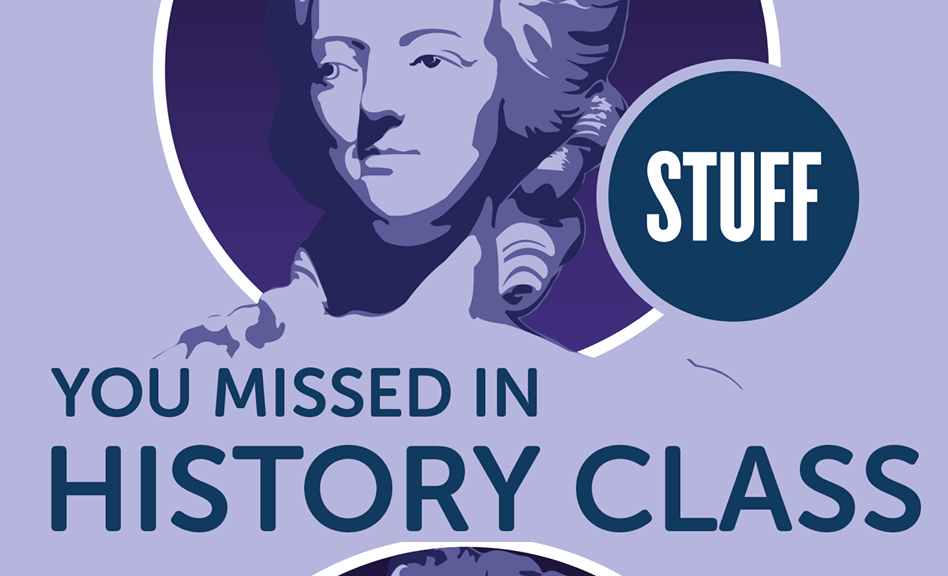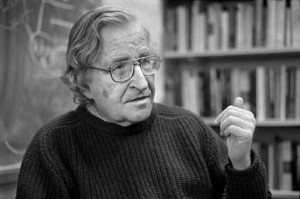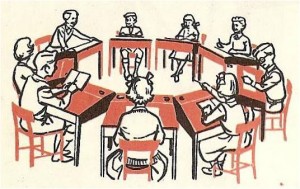Acquiring English has been an activity since the colonialism, but English language learning has become a part of the educational sector around the early 1900’s. A major influence of this movement is pushed by the declaration of ‘English as an official required language’ for the immigrants in the United States of America.
1960s
As for the educational system, specifically targeting the public sector, it was the work of Noam Chomsky, a linguistic philosopher, whom pushed strategies upon the process of language acquisition. His researches and explorations in the development of language acquisition initiated a series of inquiries about English as Second Language (ESL) learning.
Within the same decade, an organization was formed to regulate the amount of information gathered and the needs demanded in regards to handling ESL materials. This organization went by and still go by the title of Teachers of English to Speakers of Other Languages (TESOL).
1970s
Only one decade after Chomsky published several linguistic studies, different methods were introduced by other linguists. Comprehensive learning, incorporating physical movement and conventional relativity, was the main focus with these new methods. For example, Communicative Language Teaching (CLT), Total Physical Response (TPR), Task-based Learning approach (TBL), Audio-lingual , and more were all introduced during this period.
However, even with effective methods being in place for access, the curriculum and assessment guidelines were not very proactive. Too much ambiguity and limitation of data collected render the guidelines to be minimally effective to aid teachers’ teaching experience.
1999
I found guidelines provided for classroom teachers and specialists in 1999. This is the period where ESL programs across British Columbia began to transition into the English Language Learner (ELL) program.
The assessment and perspective about the ELL students are very generic and vague. Fortunately for me, I was under the supervision of a proactive ESL teacher who was quite aware of the ineffectiveness of the worksheet-based language acquisition process. She lead group games and field trips to allow us English exploration with hands-on experiences. My classmates and myself had the privilege to learn arts, carpentry, landscaping, baking, music, and teamwork while learning English.
2001
3 years after the global tech bubble burst and stock market crash, waves of immigration increased across Canada. This led to a change, an addition, to the ELL program guideline. There was a clear sophistication increased to the pre-existing guideline from 1999.
The four basic linguistic skills, reading, writing, listening, and speaking, were expended to three levels – primary, intermediate, and secondary – for assessment and evaluation.
I was in my secondary years during this time. Now that I am reading the guidelines and teachers’ expectation of adjustment to students’ need, I can clearly say that the amount of professional development for teachers during the time for teaching non-native English speaking students were lacking – strongly.
2009~13
I think there seemed to be a trend with change to the ELL program that goes hand-in-hand with the immigration trend. Since 2008, a major wave of Chinese immigrants entered the public education demographics. This could have led to a major increase in demand with ELL specialists and trainings. In fact, teachers would be facing serious teaching obstacles if they were not properly trained in handling and addressing the ELL students’ need.
Education is ever changing, and always growing. ELL program is a major part of this change for BC education program, since almost 50% of the demographic in Vancouver are no longer native English speakers. According the 2011 census, 45% of Vancouver do not speak English at home. This percentage would only increase in the next decade if the immigration rate remain steady as it is now.





I am looking for changes in supporting ELL student in the past 10 years as well as changes in PDP teacher training to give new teachers some basic knowledge of how to support ELL in the classroom. Thanks
“Exploring ELL History can be a fascinating journey through the evolution of language learning and education. A 43 inch touch screen monitor is an incredible tool for interactive lessons, allowing students and educators to dive into timelines, multimedia resources, and cultural contexts. It makes learning engaging and visually impactful for everyone!
The ELL History provides a rich understanding of how English Language Learners have evolved and shaped educational systems. Just as the Parliament Winter Session 2024 will address critical issues shaping the future of governance, delving into ELL History sheds light on the policies and approaches that have impacted language education over time. By learning from the past, we can better prepare for future educational strategies, just as lawmakers aim to create lasting change during each session.
The history of ELL (English Language Learners) showcases the evolution of language education and its impact on global communication. Just like in Nulls Brawl, where players unlock new skills and strategies, ELL students overcome challenges to master a new language! Visit now to explore more!
Dive into the world of ELL History and discover the evolution of language learning in an interactive way! Just like Firekirin keeps players engaged with dynamic challenges, a 43-inch touch screen monitor brings lessons to life with immersive timelines, multimedia resources, and cultural insights. Make learning more engaging and impactful today! Visit now
Understanding ELL history is key to appreciating the journey of language learners over time! While studying, enjoy some relaxing background music with deezer apk desbloqueado for an uninterrupted experience.
Dive into the world of ELL History and discover the evolution of language learning in an interactive way! Just like FreeCine keeps users entertained with a vast collection of movies and shows, a 43-inch touch screen monitor brings lessons to life with immersive timelines, multimedia resources, and cultural insights. Make learning more engaging and impactful today! Visit now
Understanding ELL History is just as important as knowing your favorites on My Sonic Menu—both are shaped by culture, experience, and growth! Learning languages opens doors, just like great food brings people together. Visit this site to explore more!
http://mysonicmenu.net/
Such a creative way to learn about the evolution of language! If you’re interested in (reading more){https://prayertimesksa.com/} on how immersive technologies are shaping education, be sure to check out the articles here
ELL history highlights the journey of language learners and the importance of education in building diverse communities. Just as clear communication is essential in learning, maintaining good hearing health is crucial too. With ear cleaning Mackay, individuals can ensure their ears stay healthy and their hearing remains sharp. Prioritizing both education and self-care leads to a better quality of life!
Our website offers daily solutions for the popular word puzzle, making it easier for players to find the best word combinations. With accurate and updated answers, you can solve challenges effortlessly while improving your vocabulary and puzzle-solving skills.
5 minutes is all it takes! ⏳ Quick, effective, and game-changing. Visit now
If you’re looking for something simple but still fun, you might want to try Null’s Brawl. It’s easy to pick up and play, but still has a lot of action! What kind of gameplay do you usually enjoy the most?
Love word puzzles? NYT’s Letter Boxed offers a fresh challenge every day to test your vocabulary and logic.
It’s fun, addictive, and perfect for a quick brain boost.
Give it a try—click here to play!
Need help making a quick decision? Flip a coin and get instant results just visit now and give it a try
Reading about the evolution of ELL reminds me of how tools like Bloxstrap simplify the gaming experience for users just like ESL strategies evolved to make language learning more intuitive. Both are about accessibility and customization—whether it’s mastering English or tweaking your Roblox client setup.
Snapchat Planets is a cool feature for Snapchat Plus users. It shows your best friends as planets around you, the Sun. The closer the planet, the closer the friendship. Visit now for more info.
I always use ytmp4hub.cc whenever I need to download and convert YouTube videos quickly—it’s fast, free, and works perfectly every time.
Exploring ELL History becomes even more engaging when paired with visual resources! If you’re diving deep into educational content, the threads video downloader can help you save insightful classroom discussions or historical breakdowns shared on Threads. Use this tool to revisit important content anytime—perfect for students and teachers alike!
ELL History is a fascinating subject that reveals the evolution of language learning in diverse communities. Just like understanding historical context is crucial in education, working with professionals like Keentel Electrical Contractors ensures your projects are grounded in experience and built with precision. Their commitment to excellence mirrors the foundational importance of history in shaping the future.
This printer software made a big difference in my print quality and workflow.
Thank you for the article. It was very helpful and informative. I especially liked the part about Island Peak climbing—it gave me a better understanding of the adventure and preparation needed.
Nothing beats the feeling of getting your dutch bros birthday drink — it’s like a little celebration made just for you! The fact that they offer it completely free shows how much they value their customers. It’s not just about coffee, it’s about creating moments that make your day better. Definitely one of the coolest birthday perks out there!
Thank you for your kind words! Along with Island Peak climbing, I also want to mention the Everest Three Pass trek. It is one of the most challenging and exciting treks in the Everest region. This trek takes you through three high passes: Kongma La, Cho La, and Renjo La. Each pass is above 5,000 meters and offers stunning views of Everest, Lhotse, Makalu, and many other peaks. The trek also includes visits to beautiful places like Gokyo Lakes, Everest Base Camp, and Kalapatthar. It’s a great adventure for those who want a full experience of the Everest region and are ready for a tough but rewarding journey.
Thank you so much! I’d love to highlight the Gokyo Valley Trek, a truly serene and scenic journey through the heart of the Everest region. This trek leads you to the enchanting Gokyo Lakes, a chain of sparkling high-altitude glacial lakes known for their deep turquoise hues. One of the major highlights is the hike up Gokyo Ri (5,360m), where you’re rewarded with breathtaking panoramic views of Mount Everest, Lhotse, Makalu, and Cho Oyu. The route passes through peaceful Sherpa settlements and offers a more tranquil alternative to the popular Everest Base Camp trail. It’s a wonderful adventure for those seeking natural beauty and a more offbeat Himalayan experience.
I’d love to highlight the Everest Three High Passes Trek, a truly thrilling and scenic adventure through the heart of the Everest region. This trek takes you across three stunning high passes—Kongma La (5,535m), Cho La (5,420m), and Renjo La (5,360m)—each offering breathtaking views of Mount Everest, Lhotse, Makalu, and Cho Oyu. Along the way, you pass peaceful Sherpa villages and ancient monasteries, making it a rich cultural and natural experience. It’s a perfect trek for those looking for a challenging yet less crowded route in the Himalayas. Thank you!
Thank you for your kind words! I also want to highlight Island Peak Climbing, an exciting and rewarding adventure in the Everest region. Standing at 6,189 meters, Island Peak offers a perfect mix of trekking and mountaineering, taking you through stunning Sherpa villages, high alpine valleys, and up close to towering peaks like Everest, Lhotse, Makalu, and Ama Dablam. Along the way, you’ll also visit beautiful spots like Everest Base Camp, Chhukhung, and Kalapatthar as part of your acclimatization. It’s a great experience for those looking to climb a Himalayan peak and enjoy the full beauty of the Khumbu region.
Great article, and thank you for sharing such a beautiful article. It reminded me of the peaceful and scenic Langtang Valley Trek, which is another amazing journey in Nepal. The trail offers beautiful mountain views, lovely villages, and a chance to experience the warm Tamang culture. It’s a perfect trek for nature and culture lovers.
For anyone who needs a lightweight automation tool, this portable autoclicker is perfect no installation required and super easy to use.
pro insta is the best Mod of Instagram that comes with anti-ban and anti-ad arrangement to provide you a 100% secure and completely opened involvement.
If you suddenly find that the speaker sound is completely dull and crackly while playing music or watching videos on your phone, then worry no more! The fix my speaker tool will provide an easy solution. With just one click, this tool will launch Powerful Sonic Wave Sound, which creates intense vibrations inside the speaker, which easily removes accumulated water or dust. The new version has added Auto Clean Sense Mode, which automatically understands the problem with the speaker and plays the correct sound. It is very easy to use, just go to the website and click the button to start the work. It is completely free, safe, and the speaker’s sparkling sound will return after using it once!
If you’re into fast-paced action, this popular online game is a modded version of Brawl Stars with enhanced features and new customizations.
The history of ELL (English Language Learners) is truly inspiring—it reflects perseverance, adaptation, and the power of communication. Reading about how students overcome language barriers reminded me of one of those classic Canadian Pick Up Lines: “Are you from Canada? Because I can’t stop saying ‘eh’ every time I think of you.” Just like Canadian charm, the ELL journey is warm, welcoming, and full of heart.
Thank you for the article. It’s interesting and easy to understand. I especially liked how clearly each season was explained. It made me think about the Everest Base Camp Trek too, which is another popular trek in Nepal. Choosing the right season for Everest Base Camp is also important for good views and a safe journey.
Thank you for the article. It’s interesting and easy to read. I enjoyed learning more about the trek and the helpful tips shared. It also reminded me of the amazing experience of trekking to Annapurna Base Camp, where the mountain views, peaceful trails, and warm village hospitality make the journey truly unforgettable.
yacine tv online watch in most cases highlights as a remain TV gushing stage. Clients can get to a wide run of channels, categorized into sorts like sports, data, motion pictures, and documentaries.